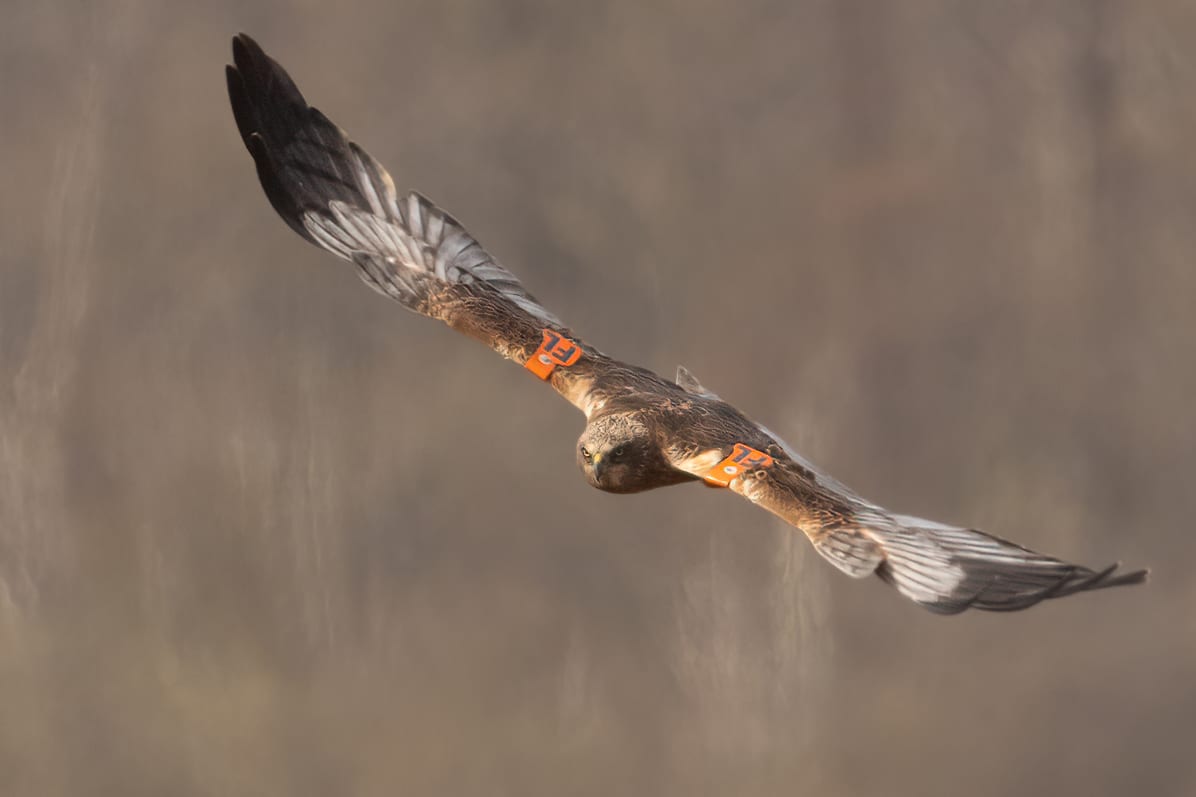Red cage fungus Clathrus ruber: The 6th Suffolk record of this extraordinary species. Found by Aimee Dines-Davey
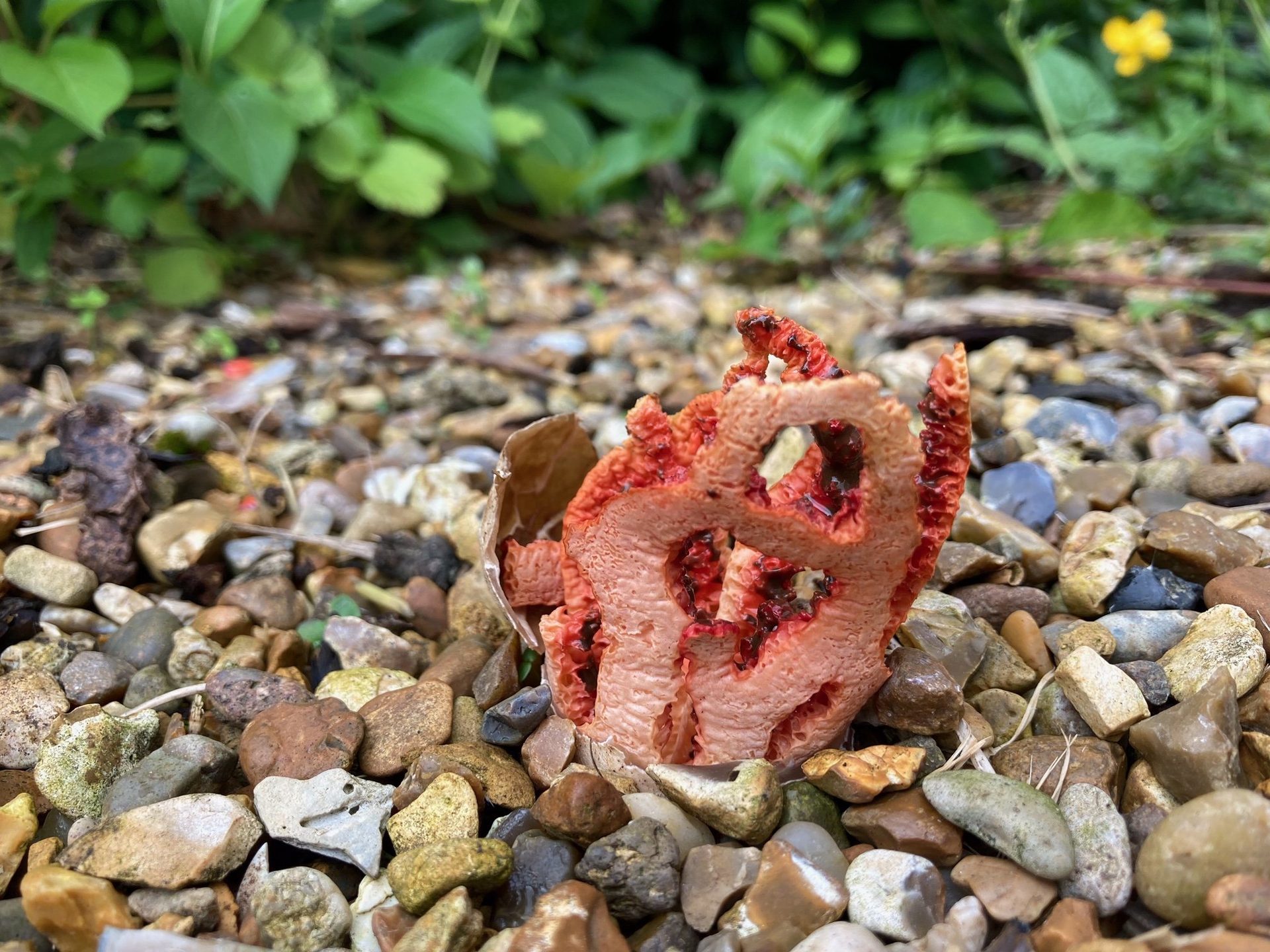
SBIS News
Lidar derived tree canopy polygon data
Continuing the analysis of this data from Norfolk County Council, for Suffolk Parishes we now have tree canopy cover by type: woodland and non-woodland trees, conifer and broadleaf woodland trees and scrub area trees, using OS MasterMap polygons. Demonstrations of this data and mapping it in MapInfo are being given across the SCC Natural Environment Team for those who are interested in using it.
County Wildlife Sites, Roadside Nature Reserves, County GeoSites
A County Wildlife Site Panel meeting took place at the end of March. Two new CWS and an extension were designated. Suffolk Wildlife Trust are continuing to re-write many CWS citations which are being incorporated into our database. Dunwich Cliff GeoSite has been extended slightly southwards.
Data updates to SLA Partners
These 6-monthly updates are underway. For those who download the data, notification emails including the download links will be sent out when the new data is ready.
Commercial Data Enquiries
Currently for 2022 we have processed an average of 12 searches a week with 12,098 records processed weekly. We saw the same average in 2021, but with 11,680 records processed weekly.
This compares with:
- 2020 – weekly average number of searches 10 and average of 9,164 records processed weekly.
- 2019 – weekly average number of searches 9 and average of 9,690 records processed weekly.
We can only speculate on the reasons for this increase, but we have certainly seen an increase in records received since the start of the pandemic.
Average weekly searches and records processed 2019 to 2022
New SBIS website
We have just unveiled our new website with improved functionality, both the data request service and recording wildlife pages are now accessible directly from the home page.
During the process, a treasure trove of information was discovered hidden away and now has pride of place. The amazing archive is drawn together in the new Knowledge Hub and divided into five sections: Library, Local information, Planning pages, Information for public bodies and Downloads.

The Library contains archives of SBIS newsletters, Suffolk Natural History, Suffolk Birds, White Admiral, Suffolk Argus, Suffolk Naturalists’ Society conference papers, Planners’ Update newsletters, and links to Antiquarian books.
They can be read online and most have a table of contents or are searchable, making it easy to find articles covering specific topics.

Local Information
- Species of the month is a new feature exploring some of the fascinating wildlife found in Suffolk throughout the year.
- The Suffolk Bird Atlas (2007–11), was part of the biggest survey of British birds ever undertaken to map abundance and distribution. It has a summary of the results, over 200 species maps and an interactive map displaying the birds recorded for every 2 Km square tetrad in Suffolk.
- Suffolk’s Priority Habitats has descriptions, associated species, useful links, management advice and PDF fact-sheets for each Priority Habitat.
- Suffolk’s Priority Species Individual species pages with links and downloads. Taxonomic group pages with the county recorder, major publications, papers and downloads.
- Suffolk’s Protected Sites describes conservation designations in Suffolk. Proposing a County Wildlife Site explains the procedure for CWS site designation.
- Traditional Orchards shares Suffolk Traditional Orchard Group’s conference presentations, orchard management advice notes and newsletter archive (2012–17).
There are also dedicated pages for planners and public bodies, and, of course, a News & Events section where we share news, events, training and funding information.
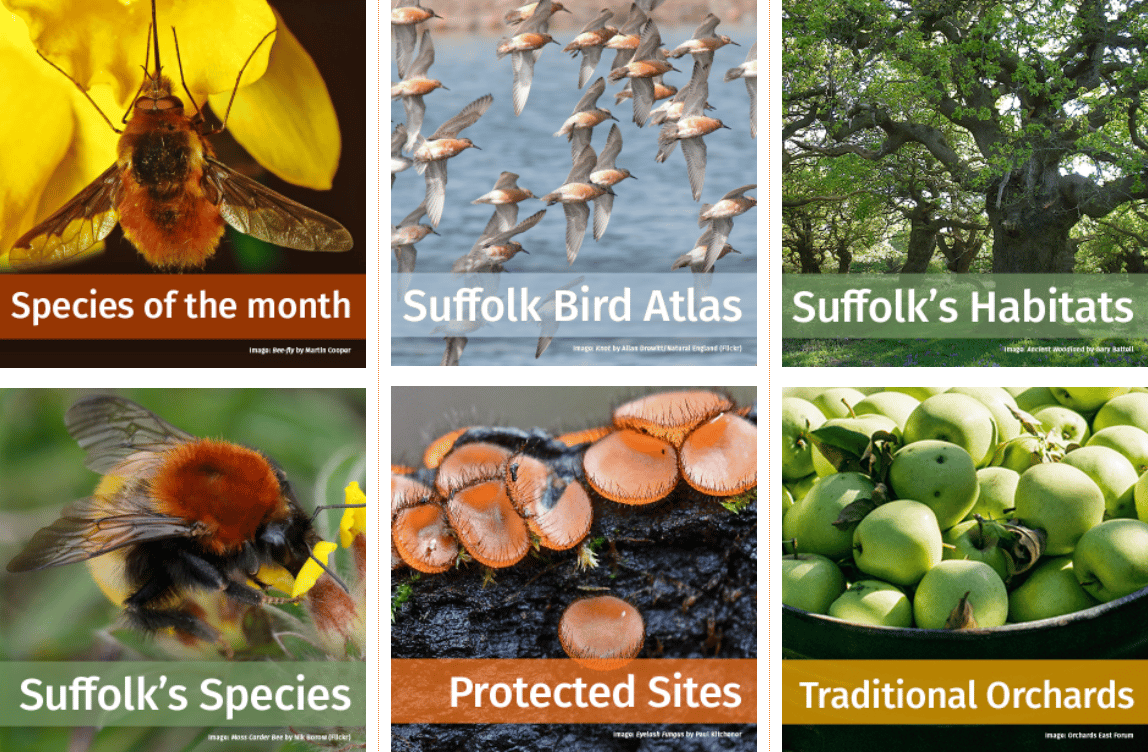
Monitoring Suffolk’s County Geodiversity Sites (CGS)
Caroline Markham, GeoSuffolk
As Covid-19 restrictions eased in summer 2021 monitoring our County Geodiversity Sites (CGS), which is mostly outdoor work, presented itself as an appropriate project for GeoSuffolk to undertake. We have designated 28 CGS over recent years and have revisited 23 of these so far to check that the geology remains accessible to the public. All of our CGS have public access – we are so fortunate to have so much land under public/charity ownership in Suffolk. The list of 28 CGS on our website, Geology and Sites (geosuffolk.co.uk) shows there are several inland sites, but most are along the coast due to its widespread public access. They cover a good range of Suffolk’s geology from ‘London Clay’ (Harwich Formation), in the south (and the oldest deposit), through the Coralline, Red and Norwich Crags to the much younger Pleistocene deposits further north. The following sites exemplify this geological diversity.
Nacton Cliff CGS on the Orwell estuary has excellent exposures of London Clay, a 54 million year old marine deposit. This is good place to spot sedimentary structures and lithologies – bedding picked out by pale strata rich in volcanic ash; near-vertical faults and the indurated mudstones or ‘septaria’ interbedded with the clays. The photo shows the author standing in front of a mudstone band and pointing to an ash band in June 2021.
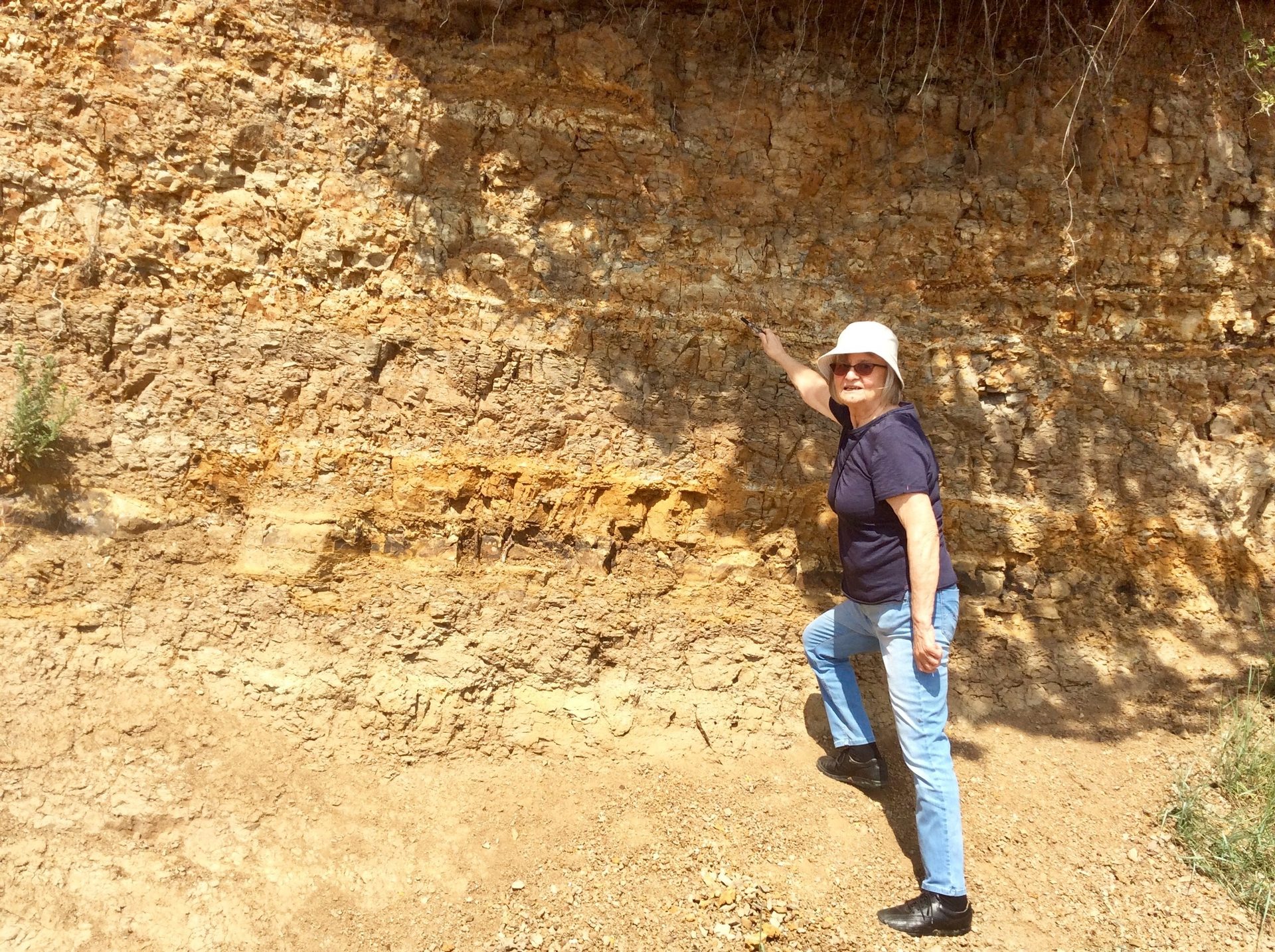
Nacton Cliff CCS June 2021
Orford Castle Pit CGS is a real success story for the Suffolk Coast and Heaths AONB Work Party team who helped GeoSuffolk to clear the exposures of Coralline Crag there in 2015. (Permission to do this took time because the pit is part of the Scheduled National Monument - see SBIS Newsletter Spring 2016 for more!) Coralline Crag is a shelly limestone about 4 million years old, unique to Suffolk, but with hardly any exposures with public access. So, this CGS is particularly important and our visit in January 2022 confirmed that the Coralline Crag is still accessible here. The photo shows the indurated ‘rock bed’, which has been used as a building stone, displaying current or cross bedding suggesting deposition in a large marine sandbank.

Orford Castle Pit CGS January 2022
The Great Pit CGS at Newbourne was given a facelift by the Suffolk Wildlife Trust in 2014 (they invited GeoSuffolk – see White Admiral 90 Spring 2015) and was still looking good in August 2021 when GeoSuffolk visited. It’s Red Crag exposures provided a vivid backdrop for the abundant vegetation growth we found in the pit. The Red Crag is a c.2.75 million year-old sandy deposit with abundant fossil mollusc shells and occasional vertebrate fossils – a leopard tooth was found here in the 1830s. The photo shows small-scale current bedding (with mollusc shells visible in places) and two sub-vertical calcite fissures characteristic of this deposit.

Newbourne Great Pit CGS August 2021
The cliffs below the National Trust property at Dunwich Heath show the best publicly accessible exposures of Norwich Crag gravels at the present time. When GeoSuffolk assessed Dunwich Heath Cliff CGS in May 2022 the great channel of Westleton gravel (part of the Norwich Crag series and about 2 million years old) was evident in the cliff top. These gravels are quite distinctive with large-size, rounded, grey flint cobbles with ‘chattermarks’ and a brown interior – well worth a second look where they have fallen onto the beach as in the photo.

Dunwich Heath Cliff CGS May 2022
Thorpeness Cliff CGS has Norwich Crag sands at its base, and these are overlain in places by Pleistocene gravels and till – the latter indicative of ice action (about 440,000 years ago). The photos shows the dramatic cliff sections GeoSuffolk recorded in July 2021, with both deposits well exposed. The Norwich Crag deposits are marine, and these cliffs tell the story of the retreat of the crag seas from our coast as the climate cooled at the start of the ice age. The ensuing Pleistocene gravels and glacial till indicate terrestrial conditions, continuing to the present day. The return of the sea in modern times can be cause for concern, but GeoSuffolk’s assessment for management of its coastal CGS is one of no active intervention and we are indebted to the National Trust for its coastal policy (Our views on coast, marine and water | National Trust) which acts as a yardstick in this respect.
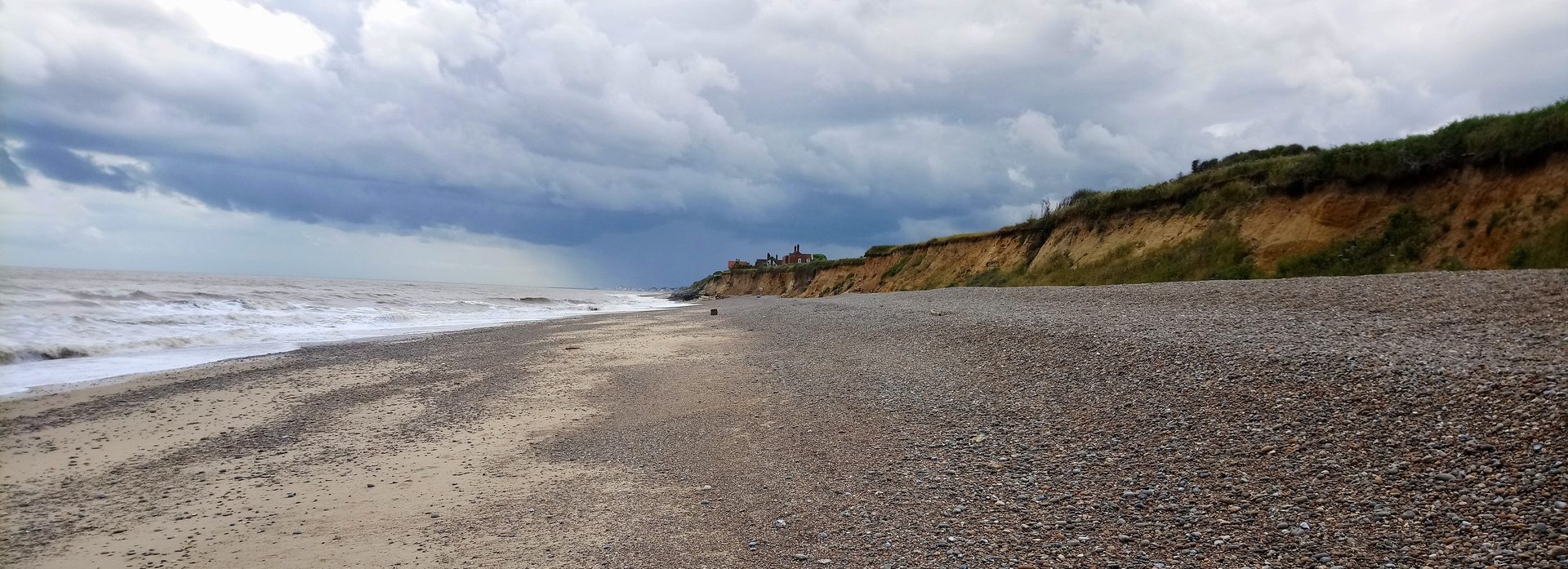
Thorpeness Cliff CGS July 2021
River Waveney Trust Update
Image: River Waveney looking towards Suffolk bank at Earsham, Mrs K. Slow (Flickr)
Waveney, Water & Woodlands farmer cluster
Using a Farming in Protected Landscapes grant, the farmer cluster have been collecting vital data on water quality, crop performance and nutrient use efficiency. Testing field drains throughout winter revealed high levels of nitrate leaching - as much as five times the safe drinking water limit. With the cost of Ammonium Nitrate at great heights, this could mean losing as much as 80 pence of nitrogen per hectare per day in wet periods. These shocking results have spurred the group to attempt to improve nutrient use efficiency in the test fields over the next 18 months, including reducing cultivations, reducing total N applied, variable rate applications and cover/catch cropping. With the help of River Waveney Trust volunteers, another measure being trialled is the use of an N-tester, or chlorophyll meter, to monitor nitrogen uptake of winter wheat through the growing season. This data can be used to tailor fertiliser applications precisely to crop need.
Outside of the FiPL project the farmer cluster continue to meet regularly to hear from experts and discuss a variety of topics, including the agricultural grant landscape, beneficial insects and best practice manure management. If you would like more information on joining the cluster group please email Emily Winter at [email protected].
Diss Project 2022/23
In collaboration with Groundwork, we are working in and around Diss over the next year to improve publicly accessible riverside spaces. The Waveney’s course through Diss is particularly poor in terms of habitat diversity, water quality and biodiversity. The river here has been over-widened and deepened, leading to slow-flowing water that is depleted of oxygen in hot weather. As a result, RWT volunteers are regularly on the lookout for fish in distress. We hope to begin to improve the river for the local community using a variety of measures, including in-channel river restoration, tree planting, invasive species control and a litter pick. We are grateful to our funders: Defra’s ‘Water Environment Improvement Fund’ and Essex and Suffolk Water’s ‘Bluespaces’ fund.
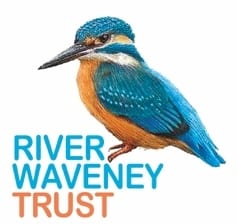
Canoe Access and Biodiversity Project - improving biodiversity, canoe access and water quality from Scole to Geldeston Locks.
Volunteer River Wardens: Over 20 Canoe-based River Wardens have been trained to carry out ‘paddle-over’ surveys and identify project sites to improve water quality and riverside habitats.
The project so far: The River Wardens canoe surveys have mapped obstructions to canoe access from fallen trees within the project area. River Waveney volunteers and contractors are
managing the river’s obstructed sections but retaining natural woody material in the main river channel to enhance biodiversity.
Increasing diversity in the main river channel: The River Waveney has little variety in some stretches. It has been over-widened and deepened due to people’s needs over the years. It is also naturally a slow-flowing river with minimal gradient. This lack of diversity means fewer habitats for fish and invertebrates.
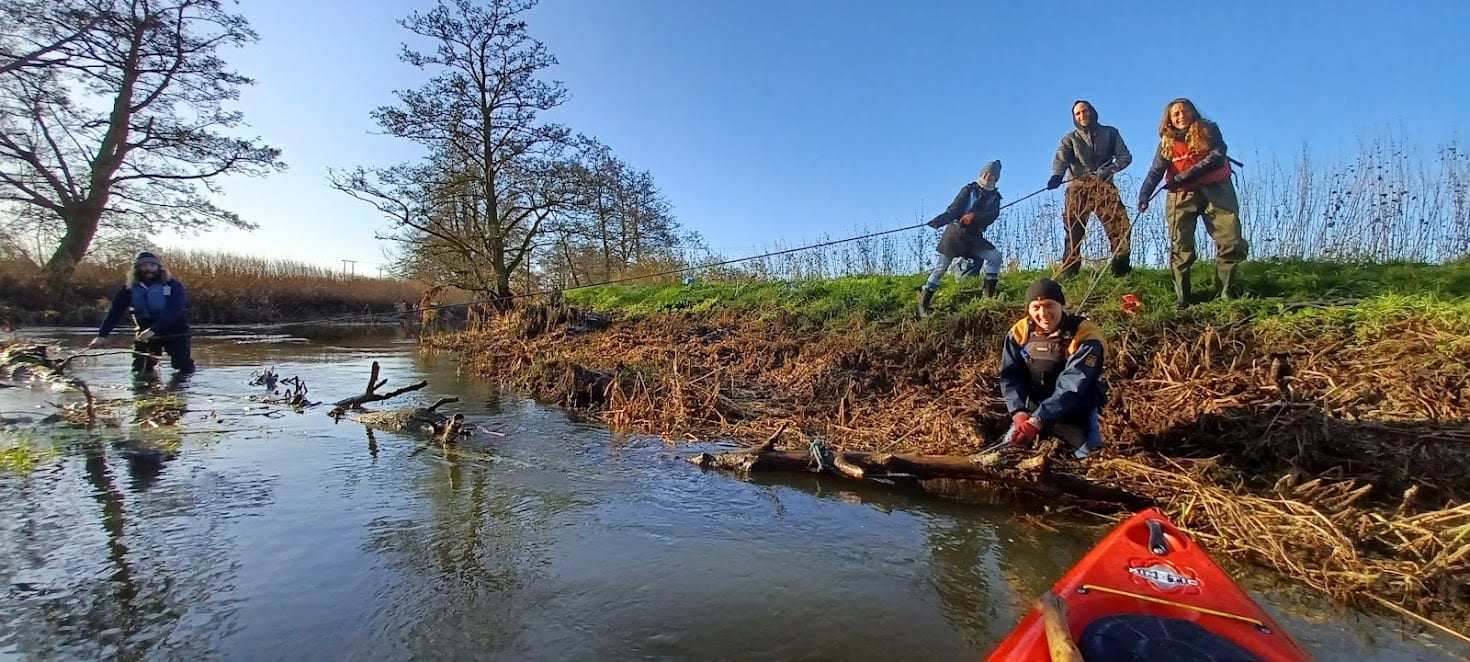
With advice from the Wild Trout Trust, Volunteers have used a tree that had fallen into the river to create this natural berm—providing habitat for, plants, invertebrates and fish while also helping to protect this section of the bank from erosion.
Training days and talks by local experts about the value of wood as a river restoration tool and risks from invasive non-native species have been well attended. Projects such as tree planting on banksides, reconnecting floodplains and adding or keeping wood in the river channel are being planned with local landowners and due to take place this autumn.

Water Quality Interventions
River wardens raised concerns about poor water quality and pollution issues at various sections along the River Waveney. This inspired us to expand our Riverfly Monitoring Project with another ten volunteers trained in April, thanks to Ian Hawkins, East Anglian Coordinator of the Riverfly Project, donating his time and expertise. New testing sites the Dove, Diss, Weybread, Brockdish and Homersfield will be added to the four already in action helping us to understand the ecological health of the river.
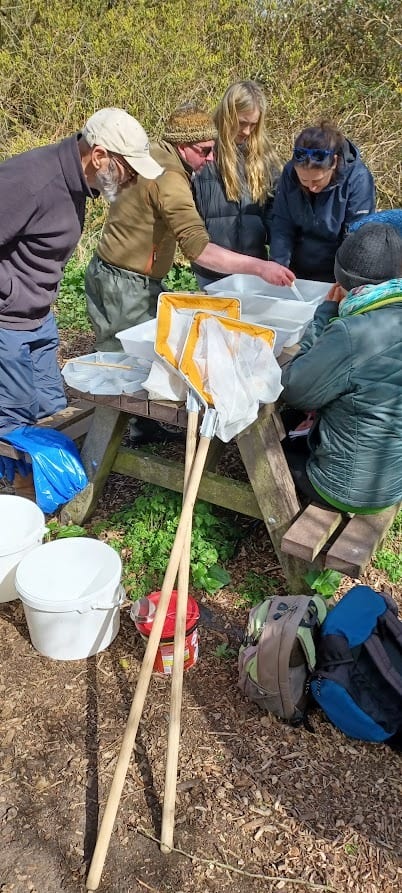

Helping to control non-native species
Like most rivers in the country, the River Waveney is at risk from non-native invasive species. Floating Pennywort is a highly problematic plant that can thrive in moving water. Capable of out-competing native species and travelling downstream at 5km per year. If left untreated, it could be causing havoc to the broads boating industry within three years. Our River Wardens have teamed up with local specialist Native Landscapes (see below) who are funded by EA and NCC, to control the spread of Floating Pennywort. The first work party for this is due to take place on 13th July.
To celebrate the river and floodplain, we will be holding a family event on Falcon Meadow, in Bungay on 2nd July 2022. As well as looking for volunteers to help carry out practical conservation tasks on the day, we will be providing information on how to create your own meadow and river ecology.
For more details on the project, volunteering, events or to report a fallen tree, please contact.
Katie Utting, Rivers Project Officer
Tel: 07810 214831
Email: [email protected]
This project is funded by the Government’s Green Recovery Challenge Fund. The fund was developed by Defra and its Arm’s-Length Bodies. It is being delivered by The National Lottery Heritage Fund in partnership with Natural England, the Environment Agency and Forestry Commission.
This project is also delivered in partnership with Essex & Suffolk Water through their Water Environment Improvements project, which aims to enhance areas of water environment where it is accessible to customers and visitors.
Thanks also to the Anglian Water Invasive Species Fund (delivered through CCF) and Essex & Suffolk Waters ‘Branch Out’ fund for their support towards this project.
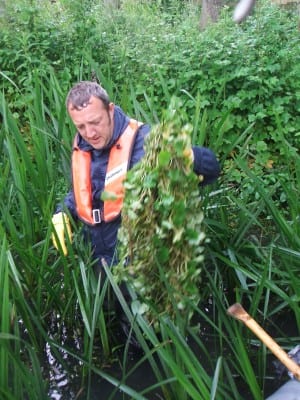





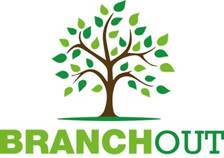
Image: Allan Drewitt/Natural England (Flickr)
East Bergholt Hedgehog Friendly Village Project
Emma Black, Dedham Vale AONB
Hedgehogs are a priority species in the Dedham Vale Nature Recovery Plan. In the past decade over a half of rural hedgehogs and a third from towns and cities have been lost. To try and stop further decline in the Dedham Vale AONB a grant was secured from the Dedham Vale Sustainable Development Fund to work with residents in East Bergholt to create a pilot Hedgehog Friendly Village project.
The AONB team worked with the East Bergholt futures group to promote the work of the project. There were many facebook posts and articles written in the local parish magazine. A Hedgehog Friendly Village postcard was delivered by volunteers to every house in the village encouraging residents to help create a hedgehog superhighway by making holes (13cm by 13cm) in their garden fences/walls. Hedgehogs travel around one mile every night in their quest to find enough food and a mate so need linked-up gardens to survive.
A hedgehog champion was on hand to help create holes and footprint tunnels/wildlife cameras were loaned out so villagers could check to see if these nocturnal mammals were visiting their gardens at night. To see where hedgehog highways were being created villagers were encouraged to record their sightings and hedgehog holes on the Hedgehog Street website’s ‘Big Hedgehog map’.
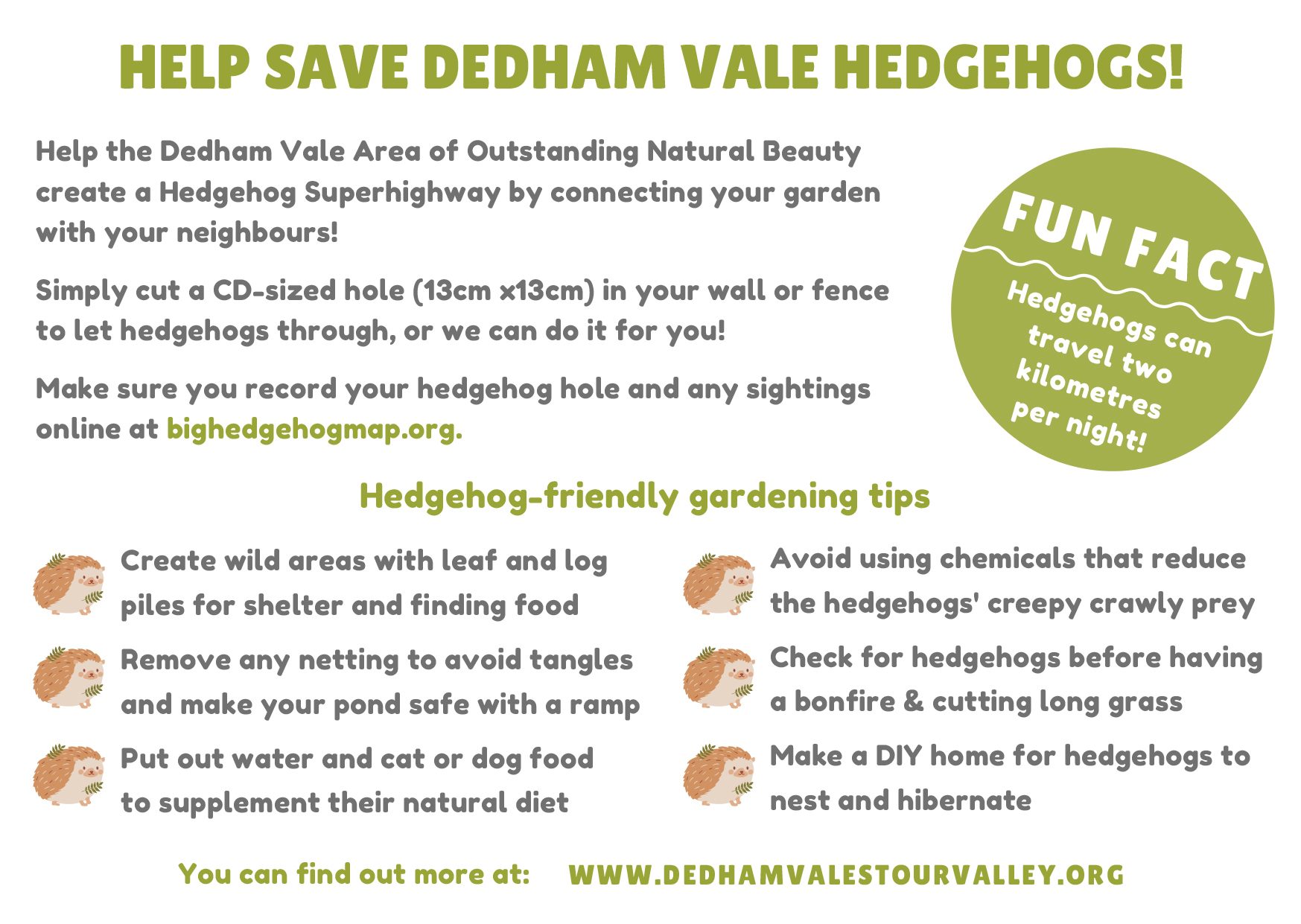

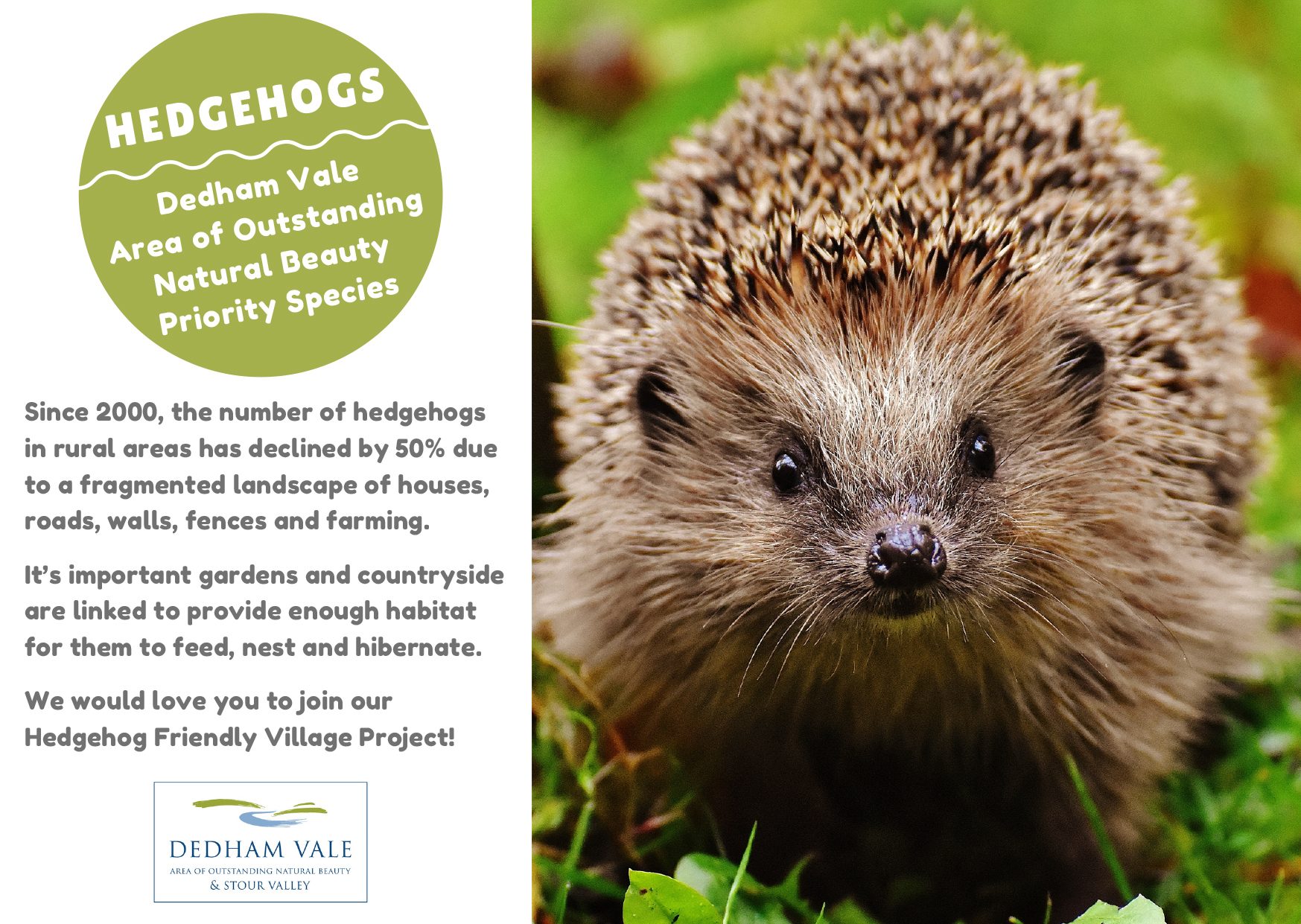
Making a hole in a garden fence
The postcard also listed top tips for hedgehog friendly gardening, a topic which was promoted at 7 community events such as the East Bergholt Open Gardens, Flatford Nature Days and Hedgehog talk and tour around hedgehog friendly gardens. 25 hedgehog homes were built by the Stour Valley Volunteers to go into suitable gardens in the village and one hedgehog champion starred in a video promoting hedgehog friendly gardening, which can be viewed on our website. To connect the village to the wider countryside and other parts of the village volunteers surveyed local footpaths and identified places where hedgerows could be planted/gapped up. Linking up habitats like this will hopefully help hedgehogs avoid roads to find food and a mate.
Left: Hedgeplanting, Right: Making hedgehog boxes
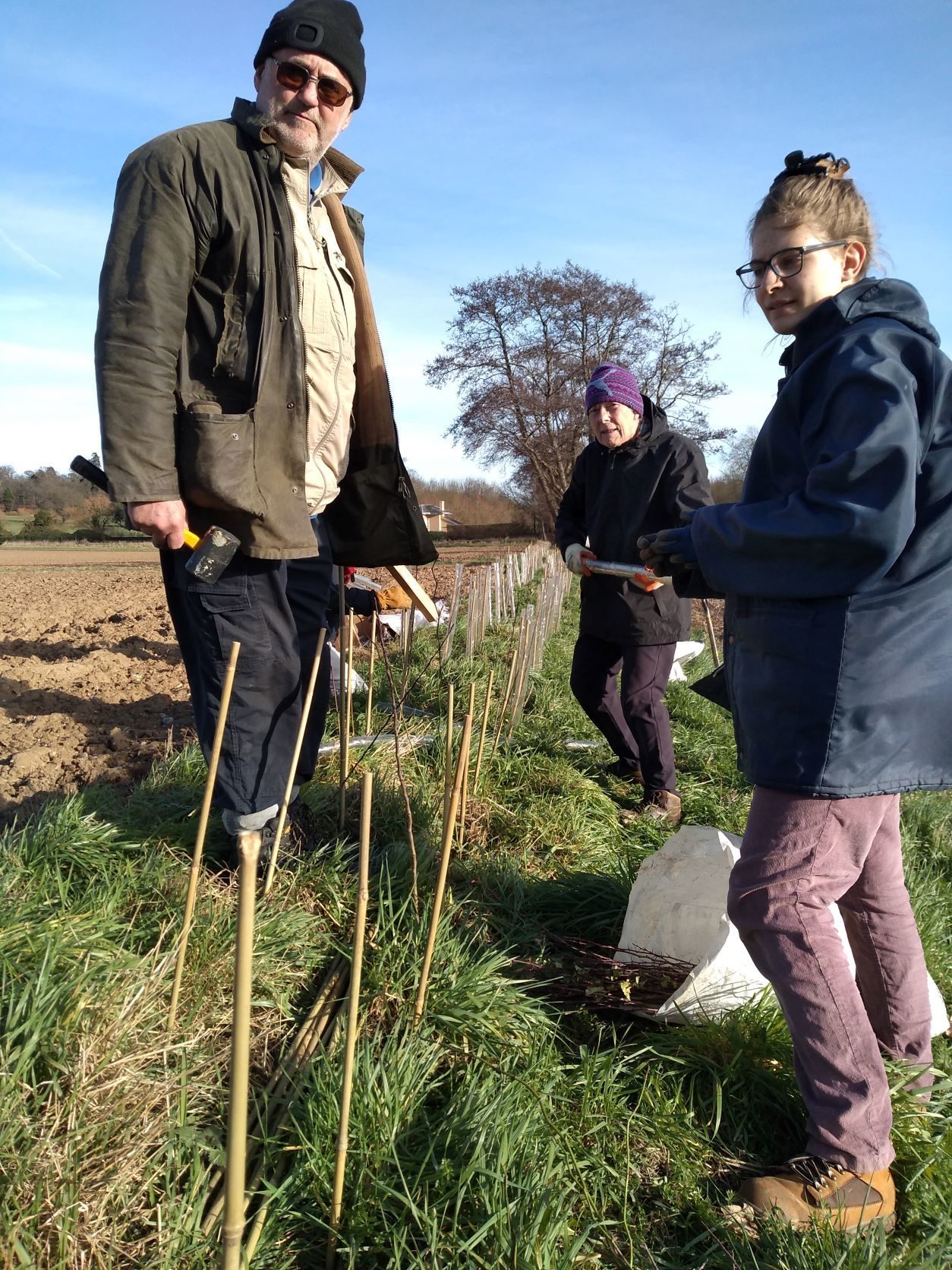
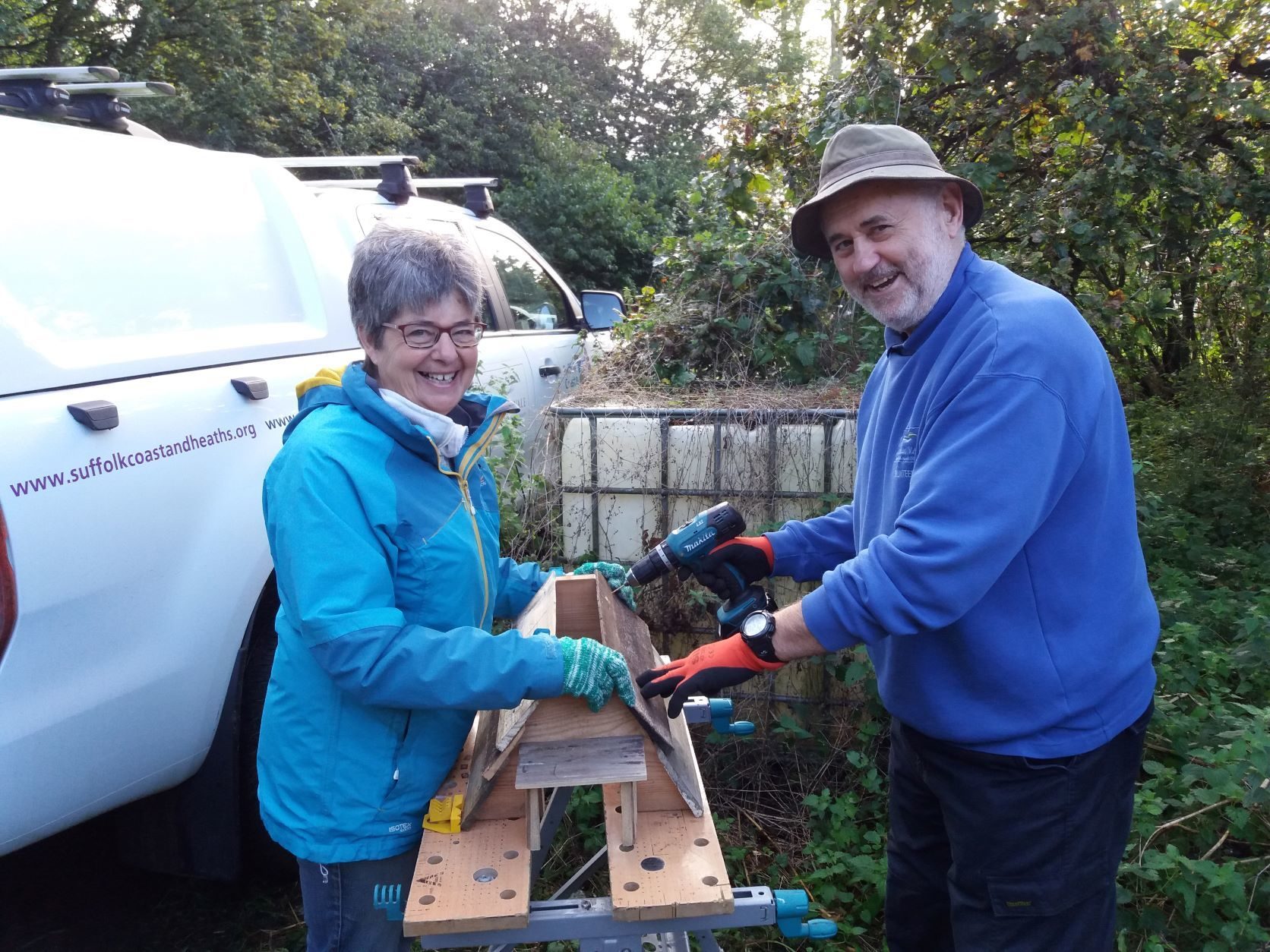
It’s been wonderful to work with the local community on this nature conservation project and to hear about the many hedgehog sightings. The East Bergholt Futures Group is now taking over the project with our support. We have also received funding from DEFRA for more hedgehog boxes/ highway signs to be distributed to suitable gardens in the AONB. After the success of the Hedgehog Friendly Village pilot in East Bergholt we look forward to expanding this project to other villages in the Dedham Vale to help create greater garden connectivity and wildlife gardens across the AONB.
Emma Black, Countryside Projects Officer: [email protected]
Looking a hedgehog highway made in a concrete gravel board
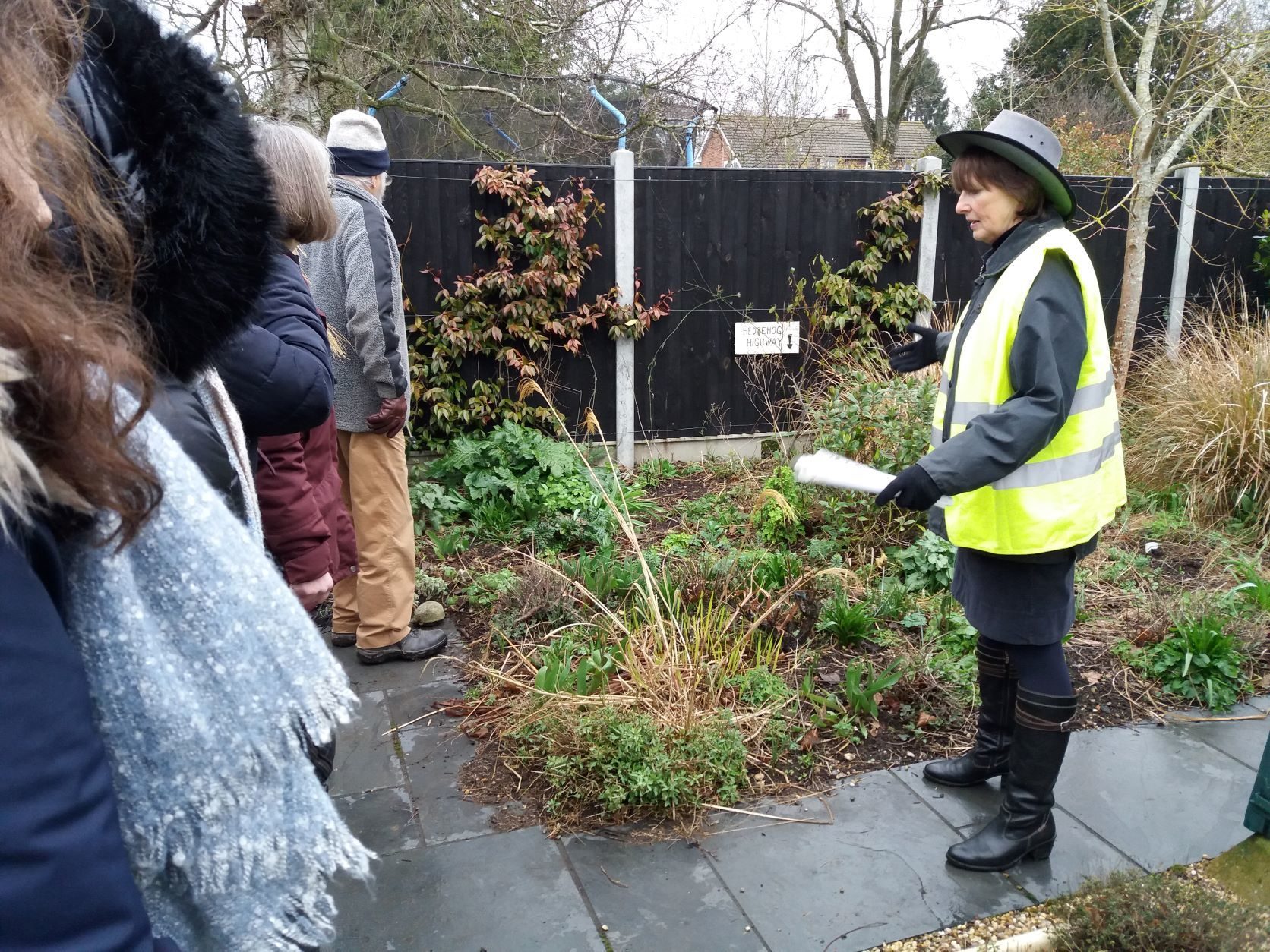
Image: Volodymyr Hryshchenko, Unsplash
Act now! Speak up for wildlife in West Suffolk Local Plan
Rupert Masefield, Suffolk Wildlife Trust’s Planning and Advocacy Manager
West Suffolk Council is currently consulting the public on the ‘preferred options’ for the new Local Plan. This plan, when it is adopted, will shape and guide economic growth and development (including housing and infrastructure) in West Suffolk until 2040.
Why it matters for wildlife
Development can have significant impacts on wildlife and the natural environment, and what kind of development is allowed where makes a huge difference both for existing wildlife and for our ability to restore nature and reverse biodiversity declines. The plan will include policies for the environment, climate change, sustainability, and protecting and restoring nature.
Why it matters for people
Apart from the impact that development has on the people who live and work in a place, the Local Plan will shape how West Suffolk’s green spaces and wild places are protected and enhanced for people as well as wildlife. We all depend on nature and the goods and services it provides, so ensuring these are conserved and well-managed for the future is in all our interests.
What we want
Our vision is for a wilder Suffolk. We want West Suffolk’s Local Plan to protect and restore wildlife and wild places, increase and improve accessible natural green spaces, and ensure that development is environmentally sustainable and fit for the climate and ecological emergencies.
What you can do
The more people respond to the consultation on West Suffolk’s Local Plan to highlight the importance of protecting and restoring nature and making sure development is sustainable and respect environmental limits, the better.
There are two ways to submit your comments on the consultation:
- Note: to respond online you must first register with the consultation system and then make you comments on the specific sections within the consultation documents. Go to Website
- By email to [email protected]
All comments must be received by Tuesday 26 July 2022 at 5pm.
What to say in your response
Focus on the things that matter most to you. Think about why wildlife is important to you, why you think it should be high on the agenda for the Local Plan, and if there are places that you want to see protected or improved for wildlife.
We face twin climate and ecological emergencies that cannot be ignored in local development plans if we are to avoid the worst impacts on our communities, economy, and environment.
Nature recovery and climate change should be two of the top priorities for the West Suffolk Local Plan.
- The new Local Plan’s strategic objectives and policies should:
- Ensure the overall scale, location and design of new development stays well within environmental limits, i.e. does not cause the condition of the natural environment to deteriorate;
- Protect existing wildlife and the natural environment (including irreplaceable habitats such as ancient woodland) by following the mitigation hierarchy of 1) Avoid, 2) Reduce, 3) Compensate;
- Ensure all new development is zero carbon in its materials, construction, and operation;
- Deliver nature positive development that achieves a meaningful increase in biodiversity of at least 20%;
- Promote good ecological design and green infrastructure led approaches;
- Support nature recovery by ensuring development contributes to the creation and restoration of wildlife habitat and ecological connectivity in strategic locations;
- Protect Local and County Wildlife Sites from development – these sites are vital stepping-stones across the landscape between larger protected wildlife sites and priority habitats and should form the backbone of the Nature Recovery Network;
- Recognise the wider social, economic, and environmental benefits of nature and embed these in the policies for economic growth, health and wellbeing, transport, housing, and infrastructure.
Suffolk Wildlife Trust provides more detailed guidance on responding to the consultation on their website:
https://bit.ly/WestSuffolkLocal
Creating sustainability in
community-based conservation
Dr Adrian Cooper
Felixstowe’s Community Nature Reserve (FCNR), located on the Suffolk coast, was created in May 2015. It was a time when local wildlife was in fast decline. There was no coordinated platform for local people to support wildlife. It was therefore a perfect time to create a community-based conservation project.
FCNR has three aims. First, to educate local people about the decline in local wildlife, and what each of us can do to stop that decline. Second, we encourage our members to move beyond talking about conservation, and to start growing pollinator-friendly plants, building hedgehog homes, installing bird feeders, nesting boxes, and creating wildlife ponds. Third, we encourage other friends, family members and neighbours to do the same. In this way, FCNR has grown to over 1,700 active members in Felixstowe. We have also helped to establish 11 other community-based conservation projects across the UK, plus another one in Portugal. This article reflects on the factors which have helped FCNR to grow over the last seven years, and why there are good reasons to believe that it is sufficiently sustainable to last into the foreseeable future.
Creating sustainability in any organisation requires a combination of at least five factors. First, all team members must understand that their opinions and actions matter. They develop that understanding through the experience of seeing their ideas being adopted. With FCNR, we actively encourage empowerment of our members throughout the organisation. That means that if one of our members has an idea which will help us, we encourage them to put it into action. FCNR leaders offer our support if it is requested. Examples of this empowerment include the start of plant-swapping schemes between friends and neighbours. Plant pot swapping has also been successful, not only as a project in its own right, but also as a way of developing a shared sense of active belonging among FCNR members.
A second reason why FCNR is developing its sustainability is because we have a clear vision: to try and stop the decline in local wildlife populations. Impact Analyses from Felixstowe’s Citizen Science Group shows we are beginning to be successful with that goal. You can learn more about those Impact Analysis projects from the Felixstowe Citizen Science Group Facebook page and their YouTube channel. The Facebook link is https://www.facebook.com/Felixstowe-Citizen-Science-Group-110577793666042. The link to their first Impact Analysis is at https://www.youtube.com/watch?v=5Q7MIosD03c. I attach a more recent clustered bar chart to confirm this sustained local impact.
A third reason why FCNR is developing its sustainability is because we reach out to as many people in our community as possible. Social media is only one method. For local people who do not use social media, we have a monthly article in Spotlight on Felixstowe - a free advertiser magazine in our area which reaches about 15,000 local homes. We have also had team members appear on local community radio. BBC local radio and TV have also covered our progress. We have also had poster campaigns. Collectively, all these methods of communication mean that it is very difficult to miss out on the latest news from FCNR.
The fourth reason why we are developing our sustainability is because we never stand still. We believe in innovation. That means that we are happy to evolve and adapt to new challenges. A good example of recent innovation has been the way we have chosen to raise the problems of climate justice for local debate. Most people know from TV programmes that climate justice is probably the greatest challenge to humankind and wildlife at the present time. However, FCNR has chosen to focus, not on climate justice problems, but on its solutions. Obviously, we have no power to influence the international corporations or national governments, but we most definitely have the power to influence what we do as individuals in our community. We have therefore encouraged local people to suggest their own climate justice solutions. So far, the most frequently employed solution has been to eat less meat. The logic behind that idea is that if less people eat meat, there will be less demand elsewhere for land needed to grow cattle feed. That, in turn, means there will be less need for deforestation. The result of that line of thinking is that trees can feed our atmosphere. If other communities around the world adopt those same ideas, FCNR’s climate justice solution will have global consequences. Although some people might assume that a small seaside town in south east England could never have a global impact, those doubters would be wrong. Already, Sustainability TV in Vancouver, Canada has taken a strong interest in our work. With them, we hope to create podcasts to take our climate justice work further around the world. However, eating less meat is only one of FCNR’s climate justice solutions. Our members are also focusing on the importance of installing PV panels on the roofs of local homes, businesses, schools and other public buildings. A third FCNR climate justice solution is for local people to walk and cycle more, thus reducing carbon emissions, particularly on short local journeys. Support for these ideas has come from a broad diversity of local people. Among them, the Reverend Andrew Dotchin represents local churches. Business supporters include the Rainbow Tea Rooms, The Owl and Pussycat pub / restaurant, The Gallery Box, the Greenhouse Cafe, Grooveyard Records, Mr Cobbler, the Felixstowe Fairtrade Forum, Shelby Trading and the Vaping Emporium. Other businesses are registering their support every week. To give climate justice solutions a fun family appeal, FCNR has also organised a Climate Justice march. It will be an opportunity for local people to create Climate Justice banners and placards in every colour, and to emulate environmental heroes such as Sir David Attenborough, Greta Thunberg, Chris Packham and others. Arising from this climate justice work, other related projects will emerge and develop which will help to support
FCNR’s sustainability.
The fifth reason behind our developing sustainability is through our out-reach to the next generation. Our Schools Ambassador, Gillian Atacocugu, has offered local pupils a fascinating host of different ways in which they can express their passion and commitment toward FCNR and local conservation. Recent examples of Gill’s out-reach to local schools has included a very successful Writing, Art and Photography competition. Participants from local schools have therefore contributed their work, which has been shared on FCNR’s Facebook page. Our followers from all over the world can therefore be inspired by our local work. Regarding the writing part of the competition, Gill asked pupils to write to their local Member of Parliament, asking for greater political support for local wildlife. The best letters were read out on local radio. Together, this next generation is learning the importance of local community-based conservation. In doing so, it helps to sustain FCNR’s longevity.
Creating and maintaining longevity is never easy. There are always challenges. The covid pandemic was a particular concern. However, since that arose five years into our growth, it did not turn out to be as big a problem as it might have been. Quite simply, our members found ways round the covid challenges. Social distancing was non-negotiable. However, plant swaps were still left on members’ drive ways, or in their porches, or beside their front doors. Supportive conversations were held over garden fences, or at distance across neighbours’ driveways. Together, we made sure that the pandemic could never defeat us.
One of FCNR’s most important features is that we have never had any funding. In fact, we have never even had a bank account. Some observers might find that strange. However, having no money has always made FCNR very creative and gregarious. In other words, instead of having the option of throwing money at a problem, we have to dig deep into our collective imaginations and creativity. We also have to seek new partners, which is always exciting. Examples of our most long-standing partners have included the National Biodiversity Network (the UK’s largest network of conservation groups). We have also been a network supporter of the European Citizen Science Association. The result of networking with other groups is that we have immediate access to lots of willing helpers. The
NBN, for example, has over 200 member organisations.
Creating and maintaining sustainability is always a significant challenge. It needs the active commitment from a broad range of local support. FCNR is fortunate to have an abundance of active support. Our journey into continued sustainability will therefore be an adventure of imagination, hard work, innovation, communication and shared focus on what we want to achieve.
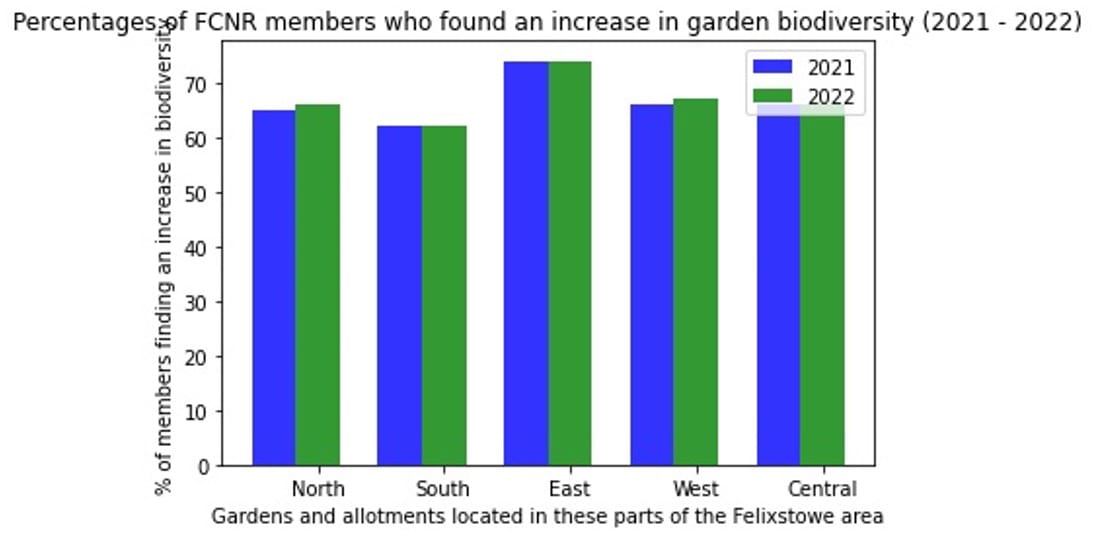
Hunting the Aliens
Andy Went, Essex and Suffolk Rivers Trust
Essex and Suffolk Rivers Trust (ESRT) are on the hunt for aliens, or as they are often called, ‘invasive non-native species’. These are flora and fauna that have been introduced into the wild, often through human activity, and is not native to the UK. One particular alien is a problem in Essex and Suffolk, and that is Himalayan Balsam (Impatiens Glandulifera), which ESRT have been out controlling during the summer for the last two years, thanks to the generous support of Essex and Suffolk Water through their Branch Out fund.
Image: Paul Lacey/Natural England (Flickr)
Our rivers are key wildlife corridors that are used by a wide and diverse range of animals, birds and plants. They provide free movement between habitats, safe refuge, plentiful food supplies and also allow many to complete their lifecycles. Unfortunately, all too often our river flora and fauna include invasive non-native species (INNS). Plants and animals that can dominate, outcompeting our native species, often spreading disease and causing habitat loss and damage to our riverbank, and predating on our native species.
What can we do to control them? Well, the Essex and Suffolk Rivers Trust is taking on the challenge, working in partnership and building on the good work of the Dedham Vale AONB and Stour Valley Projects (DVSVP), by continuing to target and control the presence of Himalayan balsam along the River Stour, River Box, Lavenham Brook and River Brett.
Andy Went, Project and Catchments Officer at Essex and Suffolk Rivers Trust, said: ‘Himalayan balsam is a real challenge to control in East Anglia, but with the enthusiasm and joint efforts of our volunteers and other organisations we hope that its control will eventually lead to its mass reduction.’
Essex & Suffolk Water’s Conservation and Land Manager, Miranda Cooper, said: “We are passionate about improving the environment and it’s wonderful to see our Branch Out programme making such a positive difference and helping local projects reconnect habitats for the benefit of communities and wildlife.
“It’s fantastic we can support local groups, organisations and charities in helping to make a difference to the communities we serve. I’d urge anyone with a deserving project, who is seeking funding, to apply.”
As its name suggests, Himalayan balsam is from the Himalayas and was introduced here in 1839 as a garden plant. However, it soon escaped beyond gardens into the wild, and it is now an invasive weed of riverbanks and ditches. It is fast growing and spreads quickly, its explosive seed pods sending seeds into the river and easily spreading downstream. Its pretty pink flowers belay a voracious riverbank hugging plant which prevents our own UK native species from growing and can cause erosion of our riverbanks, impacting the quality of our water and our river species.
Other ways you can help safeguard our native species, preventing the further accidental spread of invaders, are; being plant-wise by ensuring you do not let non-native plants spread to the wild, never releasing or allowing pets to escape into the wild, and adopting the DEFRA Check, Clean, Dry protocol when using boats, fishing kit or other equipment in the water.
Events
Conferences, Webinars & Training
National Biodiversity Network Conference
9 November • Natural History Museum, London • nbn.org.uk/news-events-publications/nbn-conference-2/nbn-conference-2022
British Ecological Society
Movement Ecology 2022: Understanding animal movement in human-altered landscapes • 7 - 8 September • University of Glasgow • www.britishecologicalsociety.org
RSK Webinars
The First Thursday Club is a monthly scientific, specialist-led webinar created and led by RSK Biocensus, which focuses on best practices relating to the natural environment. Previous First Thursday Club Webinars are available on YouTube
Suffolk Wildlife Trust
- Butterfly Walk • 20 July • Bradfield Woods National Nature Reserve, Bury St Edmunds • Read more
- Level 3 – Forest School Leader • 1 – 5 August • Foxburrow Nature Reserve, Woodbridge • Read more
- Teen wildlife photography • 4 August • Redgrave & Lopham Fen National Nature Reserve, Diss • Read more
- Level 2 Leader in Outdoor Learning • 30 August - 1 September • Carlton Marshes Nature Reserve, Lowestoft • Read more
- Wild Beach Leader Training - Level 3 • 30 August - 1 September • Sizewell Beach • Read more
- Introduction to hedgehogs • 16 October • Carlton Marshes Nature Reserve, Lowestoft • Read more
Field Studies Council
River Waveney Trust
Bones & Stones – Introducing Earth Heritage in the Waveney Valley • 22 September • Beccles Caxton Club
Wood & the Waveney: why do we want trees in our river? • 20 October • Harleston Swan Hotel
Regenerative Agriculture & Communities • 17 November • Bungay Community Centre
www.riverwaveneytrust.org/events
The Species Recovery Trust
Online courses
Around Britain in 25 grasses • 19 Sep 2022
Around Britain in 30 Bryophytes • 26 Sep 2022
Around Britain in 20 ferns and their allies • 3 Oct 2022
How to survey and assess hedgerows using the Hedgerow Regulations • 10 Oct 2022
Aquatic Plant ID Online • 31 Oct 2022
Habitat Indicator Species • 7 Nov 2022
Around Britain in 25 sedges • 14 Nov 2022
UK Wildlife & The Law • 21 Nov 2022
London Natural History Society
Gardening for Wildlife Frogs, ‘Hogs & Everything In-between! Sara Blackburn • 1 Sep 2022
Saving Britain’s Curlews by Mary Colwell • 3 Nov 2022

